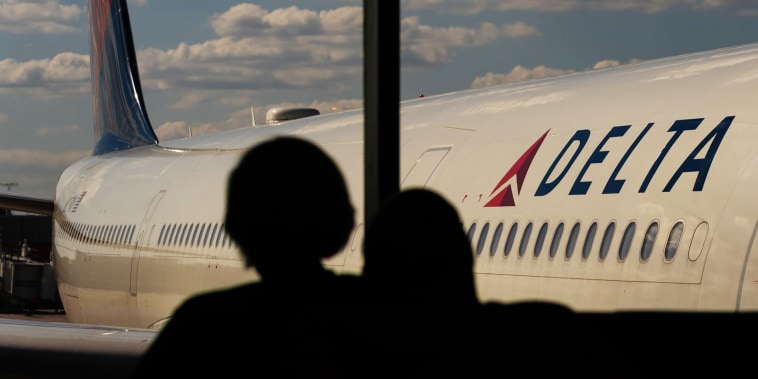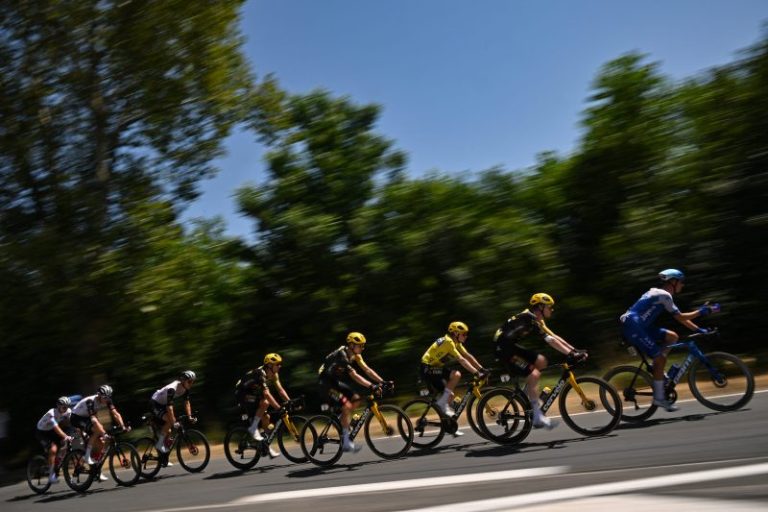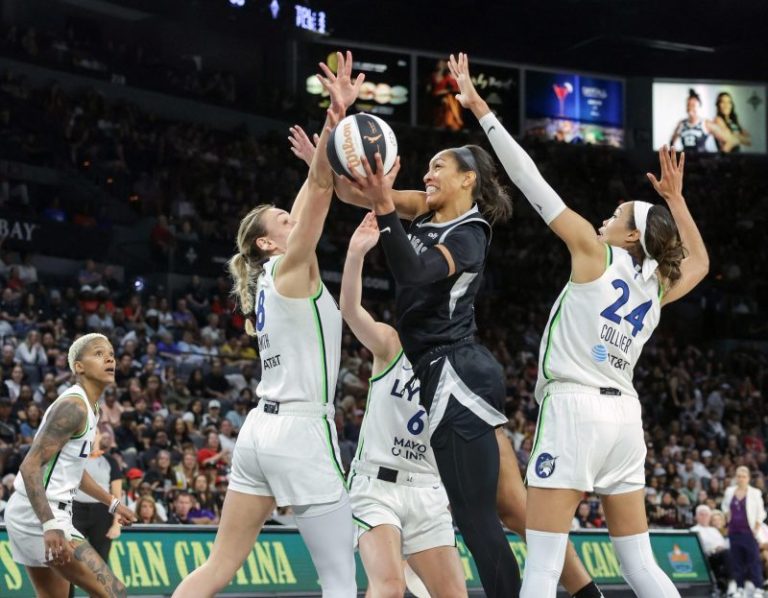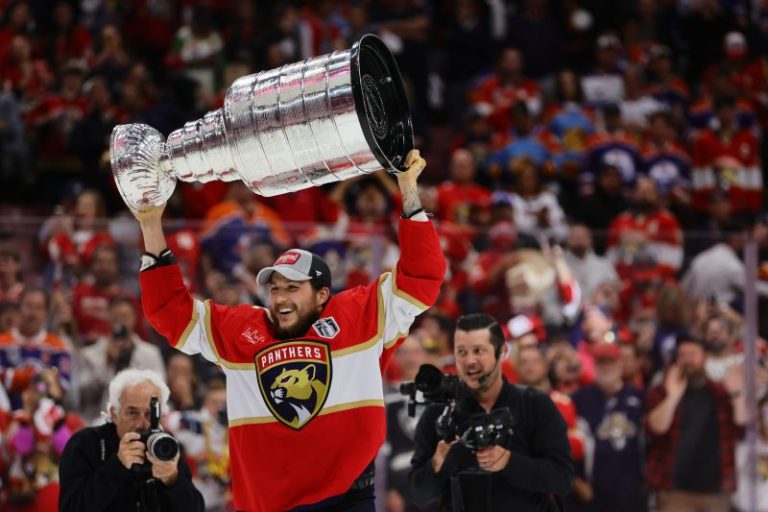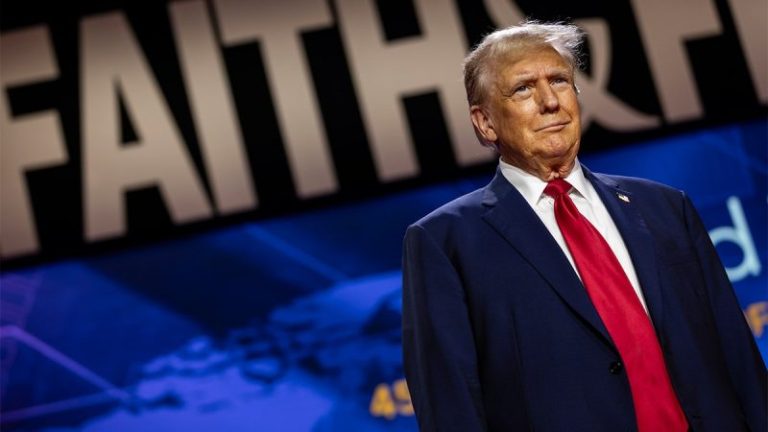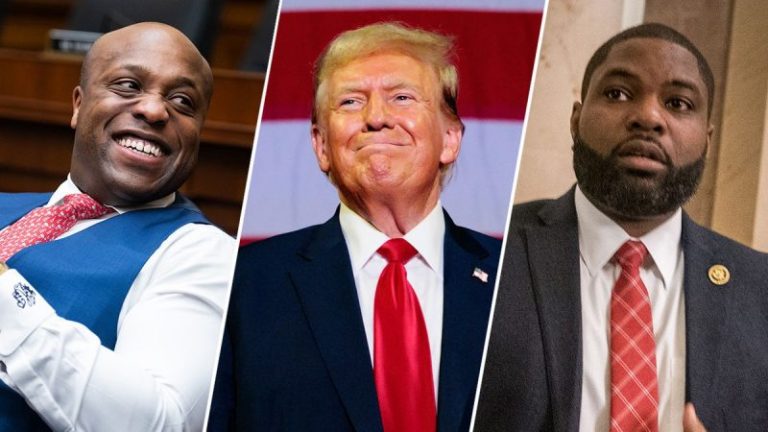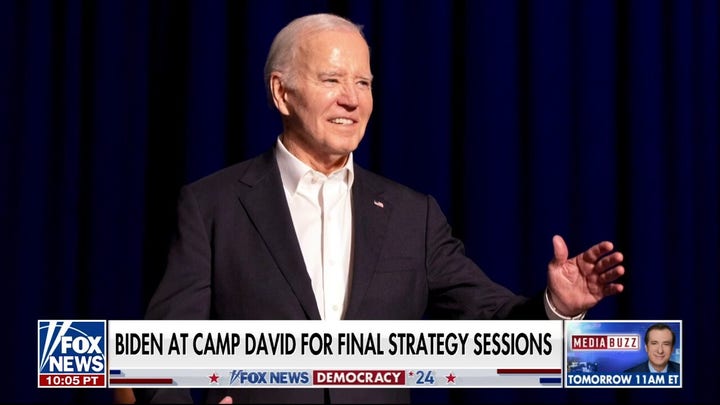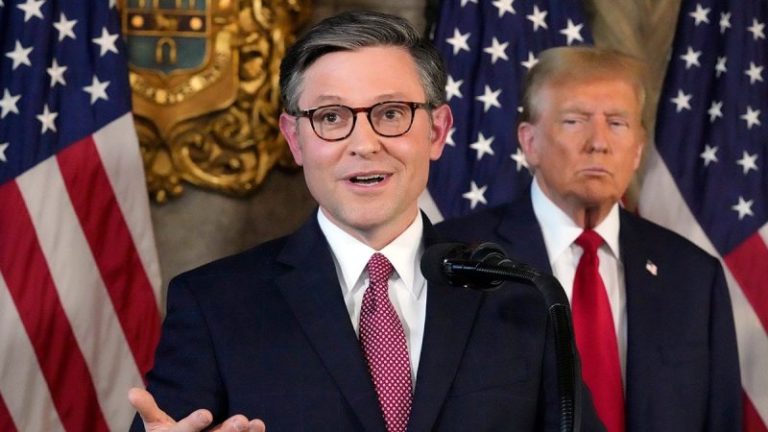Delta Air Lines is the country’s most profitable airline. CEO Ed Bastian’s challenge is to make sure his carrier stays on top.
The airline’s unit revenue, the amount it brings in for every seat it flies one mile, outpaced its competitors’ last year. Delta’s share price has soared almost 23% in 2024, more than any rival in the rocky airline sector, in a rally that’s outdone the S&P 500′s. It expects free cash flow to rise as much as 50% this year to between $3 billion and 4 billion, and is eyeing a return to an investment-grade credit rating. And a stat any traveler would appreciate: Delta came in first in punctuality last year, with more than 83% arriving on-time, according to the Transportation Department.
Rival United Airlines — second to Delta in net profit margins — is circling. It says it could grow profits even more this year.
“Knowing that there’s someone that thinks that they can take that mantle from us, that keeps us on our toes and keeps us continuing to drive hard,” Bastian told CNBC.
Delta has fashioned itself America’s premium airline. It has won over hordes of splurging travelers, many of them carrying American Express cards, Delta’s cash cow of a partner that generated almost $7 billion for the airline last year. Sales growth of Delta’s roomier and more expensive seats continues to outpace revenue from standard coach.
As they vie for luxury flyers, both Delta and United have added more high-end seating to their planes to cater to travelers who deem worthwhile a $300 surcharge for a few inches of extra legroom on a cross-country round trip, or 10 times as much for a seat in business class.
Bastian, a former auditor who said he took his first flight at age 25 for a business trip (New York to Chicago), is in charge of ensuring Delta lives up to its brand luster.
On Wednesday, Delta will take its next shot in the battle for high-spending flyers when it opens its newest, highest tier of airport lounge at John F. Kennedy International Airport for passengers in its Delta One cabin, its top product that features lie-flat beds for longer flights.
At more than 39,000 square feet it will be Delta’s largest lounge, accented with pillows that have iconic zig-zag motif of Italian fashion house Missoni, its new amenity kit partner. It features complementary spa treatments, like ice globes and serum for jet-lagged eyes, along with showers, a full restaurant, and a deck overlooking the airfield, in a bet that travelers’ desire to treat themselves is here to stay.
Delta is taking a page from the playbooks of United and American, which already dedicate their swankiest lounges to customers flying in long-haul business class. Delta plans to open Delta One lounges in Boston and Los Angeles later this year, and is studying airports where it could open others.
“The thing with this industry is no good idea goes uncopied,” said Raymond James airline analyst Savanthi Syth.
Meanwhile, United is placing huge orders for new Boeing and Airbus planes and remodeling hundreds of narrow-body cabins that feature seatback screens and bluetooth technology, a strategy that aims to cater to travelers in international business class or on the cheapest basic economy tickets.
“We haven’t exactly achieved the No. 1 profitability status in the industry, but I know we’re on our way,” United’s Chief Commercial Officer Andrew Nocella said in an interview last month. “If we continue to invest in our customers through great service and great products and great network, we know that will feed upon itself and it’ll help us achieve the financial results that we’re looking for.”
The airlines and American are approaching their 100th birthdays, and are trying to stay ahead — if not drive — shifting travel demand and still turn a profit.
United is adding to the more than 300 airports it serves. Figuring out the next hot destination is “part art” and “part science,” said Patrick Quayle, its head of network planning. The airline’s sprawling global network makes United the biggest U.S. airline by capacity and it recently launched service to places like Dubrovnik, Croatia and Amman, Jordan.
Quayle pointed to United’s addition of Cape Town, South Africa, which it first announced before the pandemic, as a success.
“Another airline has subsequently copied us. … I might want to add based in Atlanta,” he said, alluding to Delta’s home city.
The latest changes come at a difficult time for a lot U.S. airlines. Labor and other costs swelled after the pandemic, eating into margins despite record numbers of travelers. Added capacity in the U.S. market has forced carriers to discount fares in off-peak travel periods.
It’s tricky, and expensive, to change course. Even Southwest Airlines is facing investor pressure to add things like premium seating or seat assignments as its simple business model shows signs of age.
Meanwhile, U.S. consumers are growing more selective: Some corporate leaders have lamented a spending pullback while others, like Delta’s CEO, are saying the opposite. Americans are still digging into the so-called experiences economy, and paying for more comfort along the way, according to Bastian.
“They may not be buying that new EV or that that new house, but they’re saying we’re going to go out and experience the world and invest in that experience,” he said. “And that’s why you see it happening in high-end concerts, high-end hospitality.”
When the U.S. was careening toward recession almost two decades ago, Delta’s leaders made a correct bet that travelers would eventually pay more to fly on its jets.
Delta was emerging from Chapter 11 bankruptcy in 2007, which other U.S. carriers found themselves in the years after the Sept. 11, 2001 terrorist attacks.
Former CEO Richard Anderson said the airline had to start with basics: Stop losing bags. Make sure flights didn’t get canceled and arrived on time. Clean up the cabins.
“It was about building the operation brick by brick,” said Anderson, who handed the reins to Delta’s former president, Bastian, in 2016. “It didn’t matter what you did with AmEx. If the flight canceled, you ruined your brand.”
Delta took better care to avoid maintenance problems. It also started ferrying planes to airports to avoid cancellations if a replacement aircraft was needed.
And the carrier tried to clean up its image, hiring a marketing firm that advised former President Barack Obama’s 2008 presidential campaign.
Anderson said the airline needed to be consistent and not fly its mix of paint jobs and cabin interiors. It faced fresh competition from low-cost airlines like a then-spritely upstart out of Queens, N.Y. called JetBlue Airways. Delta and United had both launched their own low-cost subsidiaries, but they discontinued them.
Delta executives knew they needed a brand to match if they were going to command a premium over competitors.
“One of the things about being a premium product is consistency, consistency in policy, consistency in appearance,” said Anderson. “If you got on a flight in Tokyo we wanted you to feel like you were home.”
After the string of changes, Delta’s performance improved. Corporate business travel contracts helped boost profits and still do, as business travel returns post-pandemic.
Delta had a key advantage over competitors. After it came out of bankruptcy, it merged with Northwest Airlines in 2008, allowing it to stabilize and expand around the world while other carriers floundered. The rest of the industry spent much of the next decade recovering from bankruptcies and a subsequent musical chairs of mergers that left four big carriers in control of about three-quarters of the U.S. domestic market. Delta’s rivals were years behind the carrier on integrating their merged staff, operations, networks and fleets.
Bastian said the carrier’s focus on reliability has made life easier for not just its customers, but also its employees.
“They’re not having to explain for a cancellation or mishandled luggage,” he said. “They have time to serve rather than to apologize.”
Delta is also unique as the least unionized of the major U.S. airlines, at about 20%. In April, as campaigns were underway to organize its flight attendants and other workers, it again raised worker pay. Flight attendants for Delta’s regional carrier Endeavor, which are unionized, have recently demanded compensation on par with the carrier’s mainline flight attendants.
After Delta got the basics down, Bastian, 67, who joined Delta in 1998, said it was time for the airline to focus on more ambitious projects.
“You had the liberty to start investing in premium,” he said. “You started to figure out how to to make first class more available to customers.”
It has expanded in big-spending New York and Los Angeles, the country’s two largest air travel markets by revenue, according to aviation data firm OAG.
Delta also built up its host of global alliances, joint ventures and minority ownership stakes, giving it more reach. That includes its 49% stake in Virgin Atlantic, which already had a strong foothold in premium air travel and popular lounges.
“I think some of that heritage has made its way into the core of Delta,” said Virgin Atlantic’s CEO Shai Weiss. “I’m not suggesting we are the messiah for Delta, but there is no surprise that Delta and Virgin Atlantic see eye-to-eye on many things.”
The vast majority of the more than 940 million people that flew on U.S. airlines last year fly in coach, and Delta has tried to make its flights more desirable travelers on all sections of the plane.
It remodeled old and dated terminals, and built out its network of luxury airport lounges, which are tied to its lucrative credit card deal with American Express. It added seat-back televisions and better in-flight entertainment options, and in February 2023, it announced its long-awaited free Wi-Fi to customers enrolled in its SkyMiles frequent flyer program.
Delta has invested more than $12 billion to rebuild and update its U.S. hubs with soaring ceilings, new technology and in some lounges, a signature scent. (“It’s proprietary,” said Claude Roussel, who oversees Delta’s lounges, when asked what was in it.)
One of its latest efforts is its terminal and new Sky Club at New York’s LaGuardia Airport, alongside other airlines’ new terminals. A decade ago, then-Vice President Joe Biden famously said someone who was blindfolded and taken to that airport would think, “I must be in some third-world country.”
The airline faced big problems along the way like a dayslong system outage in 2016. And the worst of all: Covid-19. Like other airlines, Delta accepted billions in federal aid to weather the pandemic. The carrier successfully urged some 17,000 workers to take buyouts, hiring newer, lower-paid staff that lacked the experience of departed employees. Early in the process, Bastian said the newer workers gave the company a “juniority benefit.” The airline employed about 100,000 people in the U.S. as of the end of last year.
Delta and its competitors also pulled out of many small cities as the pandemic eased, isolating some smaller cities amid a shortage of regional jet pilots.
But international travel has proved resilient so far, as consumers show they are willing to shell out on experiences.
Luxury air travel and the United States didn’t go together for many years — and might not still, if you ask well-heeled globetrotters.
U.S. airlines don’t offer on-board showers or roomy suites like those on the superjumbos flown by the likes of Etihad Airways or Singapore Airlines. But the U.S. air travel market, the world’s largest, has gotten a number of upgrades in recent years, and travelers have grown to expect the same convenience they get from their online shopping sites and ride-hailing and food-ordering apps.
“Delta’s not bougie by any stretch, but when your competitors don’t try very hard, it doesn’t take much,” said Henry Harteveldt, a former airline executive and founder of Atmosphere Research Group.
But as a rewards-credit card boom, strong consumer spending, social media envy and a wanderlust that predated the pandemic combined to boost demand, airlines executives were taking notice.
Delta’s sales from premium products are growing faster than revenue from its main coach cabin, a trend the airline forecasts will continue. Sales from Delta’s loyalty business, premium cabins and other streams comprise more than half of the carrier’s revenue.
Airlines have made big changes as they struggle to accommodate the big-spending travelers armed with elite status. Major carriers have all overhauled their frequent flyer programs to reward the biggest spenders instead of those that fly the most miles, and made it harder to earn coveted elite status.
And at Delta and other airlines, many of the perks for luxury flyers come through lounges.
One of Delta’s Sky Clubs in Los Angeles International Airport offers a separate, dedicated security lane for customers flying Delta One, away from the masses at the airport. That feature will make it to the new JFK lounge later this year, a Delta spokesman said.
United and American Airlines have also worked to glam up and expand their airport lounges, access to which is a common perk with credit cards.
Delta softened some restrictions on Sky Club lounge access last year — which it made to end annoying and unsightly long lines to enter its exclusive airport real estate — after an uproar from customers.
Both Delta and United have issued sunny financial forecasts for this year, while many carriers are losing money or not pulling in similar profit margins.
“Watching [Delta] succeed, I became convinced that the product mattered and service mattered, and we have done that at United now,” United CEO Scott Kirby said at a JPMorgan industry conference in March.
And at an investor conference last month, he pointed to how the two are pulling away from the rest of the pack in profitability, particularly at big hubs.
United has made some big bets that paid off. It held onto its wide-body planes, when travel demand collapsed in the pandemic, and has benefitted from the surge in international travel.
With United on Delta’s tail, Bastian is trying to expand the airline’s reach. Bastian has attended the massive Consumer Electronics Show in Las Vegas and has announced new partnerships with Lyft and Starbucks for its loyalty program.
He says he can’t mystery shop on other carriers because he’s too recognizable, but said his team flies on competitors regularly to see what they can improve.
“We don’t own the market rights to innovation in our industry,” he said.
When asked what Delta can improve, Bastian threw kudos back to United for its detailed messages to travelers when there’s a disruption.
“They’ve done some nice things with their app,” he said. “I still think ours is better, but … they’ve done a nice job in terms their communications with their customers and how they manage trip interruptions.”
Bastian added: “We’re constantly pushing each other.”

